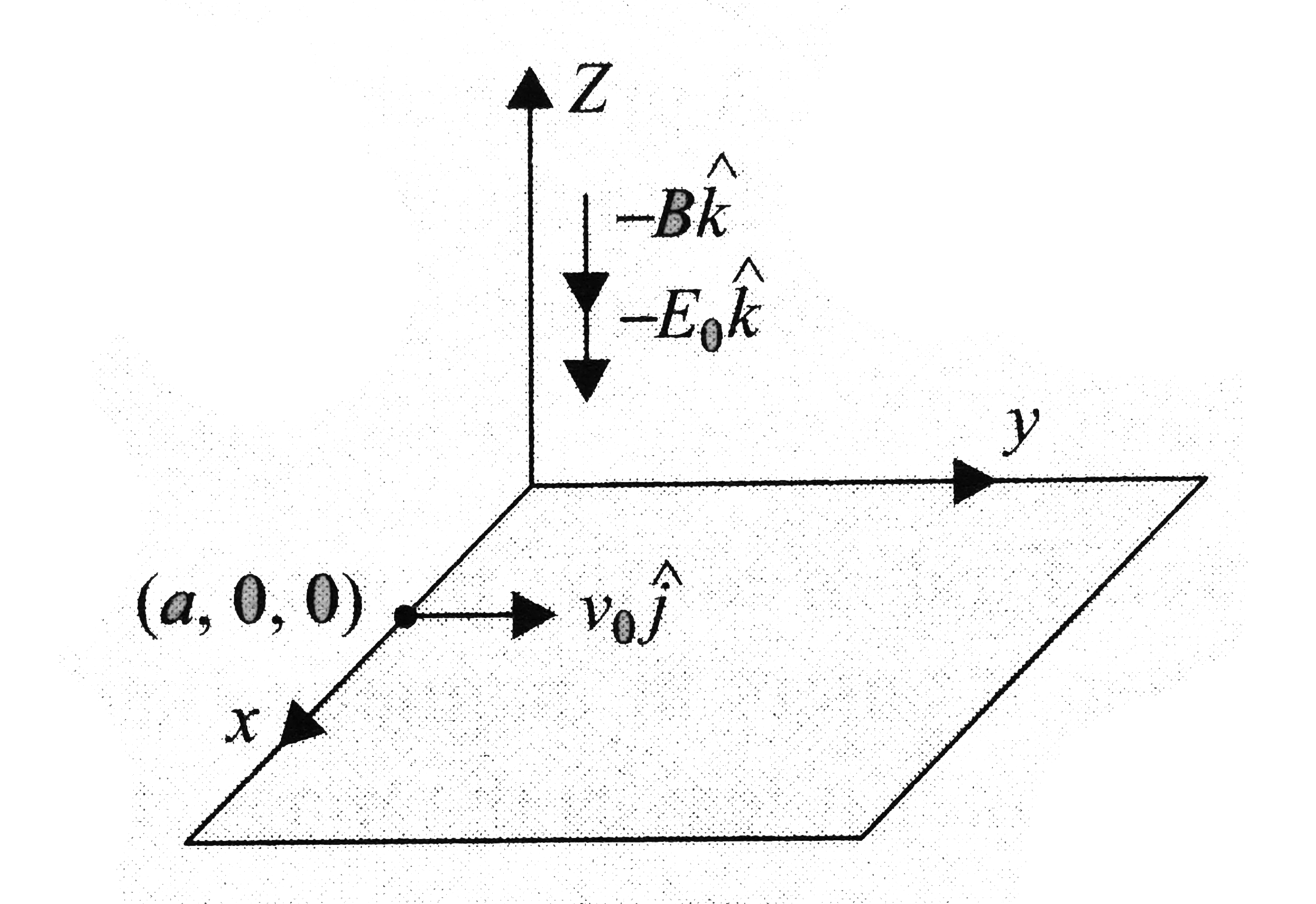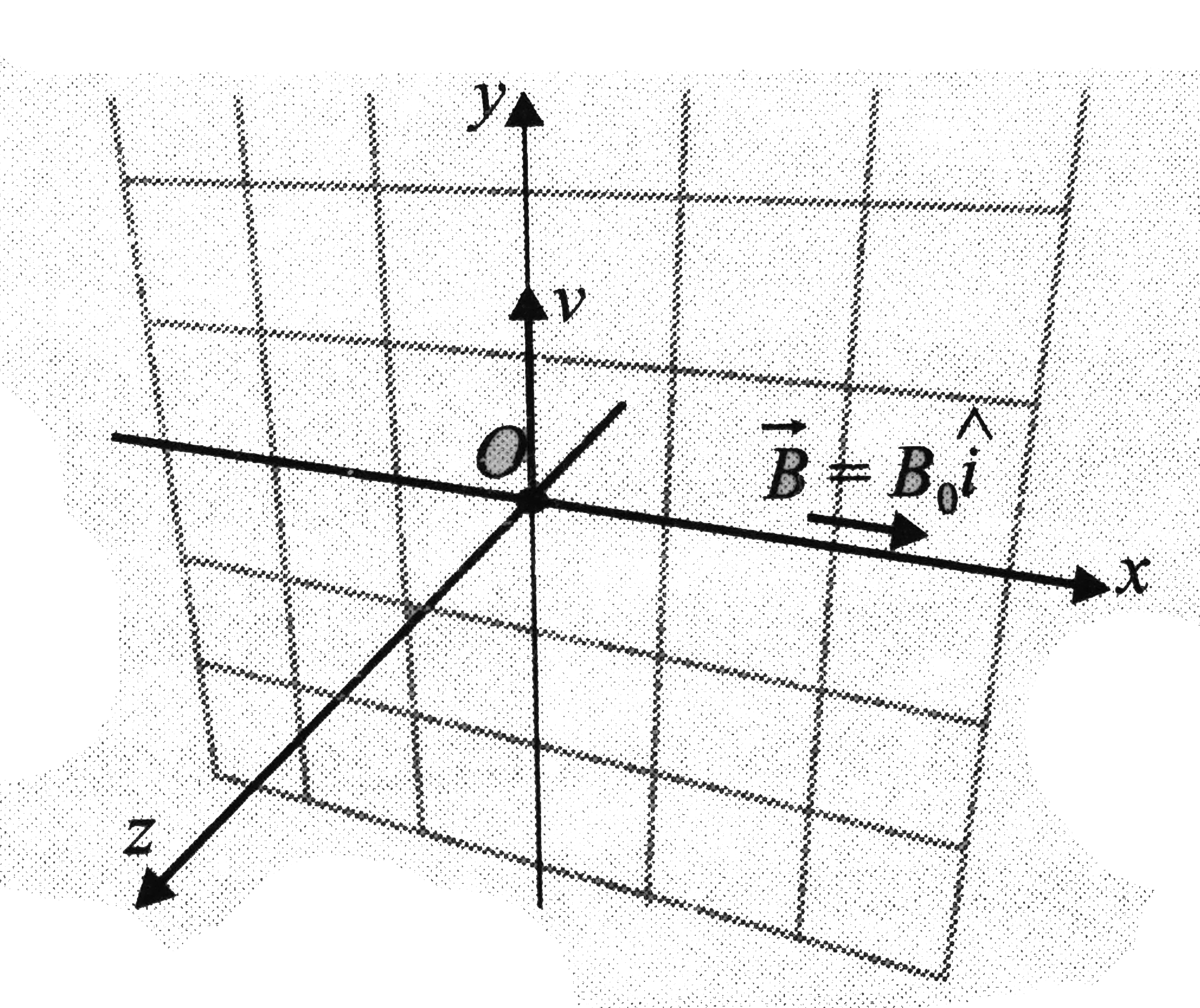A positively charged particle of mass m and charge q is projected on a rough horizontal x-y plane surface with z-axis in the vertically upward direction. Both electric and magnetic fields are acting in the region and given by →E=−E0ˆkand→B=−B0ˆk , respectively. The particle enters into the field at (a0,0,0) with velocity →v=v0ˆj. The particle starts moving in some curved path on the plane. If the coefficient of friction between the particle and the plane is μ. Then calculate the
(a) time when the particle will come to rest
(b) distance travelled by the particle when it comes to rest.

(a) mV0μ(mg+qE)
(b) t=mV0μ(mg+qE)
(c) l=mV202μ(mg+qE)
Topper's Solved these Questions
- BOOK - AAKASH INSTITUTECHAPTER - MOVING CHARGES AND MAGNETISMEXERCISE - Assignment Section J (Aakash Challengers Questions)5videos
MOVING CHARGES AND MAGNETISM
- BOOK - AAKASH INSTITUTECHAPTER - MOVING CHARGES AND MAGNETISMEXERCISE - Assignment Section H (Multiple True-False Type Questions)5videos
MOVING CHARGES AND MAGNETISM
- BOOK - AAKASH INSTITUTECHAPTER - MOVING CHARGE AND MAGNESIUMEXERCISE - SECTION D16videos
MOVING CHARGE AND MAGNESIUM
- BOOK - AAKASH INSTITUTECHAPTER - NUCLEIEXERCISE - ASSIGNMENT (SECTION-D)10videos
NUCLEI
Similar Questions
A charged particle of mass m and charge q is projected on a rough horizontally xy− plane surface with z− axis in the vertically upward direction. Both electric and magnetic fields are acting in the region and given by →E=−E0ˆk and →B=−B0ˆk respectively. The particle enters into the field at (a,0,0) with velocity →v=υ0ˆj. The particle starts moving into a circular path on the plane. If the coefficient of friction between the particle and the plane is μ. Then calculate tha :

(a) time when the particle will come to rest
(b) time when the particle will hit the centre.
(c) distance travelled by the particle when it comes to rest.View SolutionElectric field and magnetic field in a region of space are given by(Ē=E0ˆj). and (¯¯¯B=B0ˆj). A charge particle is released at origin with velocity (¯v=v0ˆk) then path of particle is
View Solution
Knowledge Check
- Question 1 - Select One
A charged particle of mass m and charge q is projected on a rough horizontal XY plane. Both electric and magnetic fields are given by →E=−10ˆkN/C and magnetic field →B=−5→k tesla are present in the region. The particle enters into the magnetic field at (4,0,0)m with a velocity 50→jm/sec. The particle starts into a curved path on the plane. If coefficietn of friction μ=13 between particle and plane, then (qE=2mg,g=10m/s2).
Total work done by electric force on the particle isA250JBzeroC125JDnone - Question 2 - Select One
A charged particle of mass m and charge q is projected on a rough horizontal XY plane. Both electric and magnetic fields are given by →E=−10ˆkN/C and magnetic field →B=−5→k tesla are present in the region. The particle enters into the magnetic field at (4,0,0)m with a velocity 50→jm/sec. The particle starts into a curved path on the plane. If coefficietn of friction μ=13 between particle and plane, then (qE=2mg,g=10m/s2).
Radius of curvature of the path followed by particle, initially isA5mB2.5mC1.25mD10m - Question 3 - Select One
A charged particle of mass m and charge q is projected on a rough horizontal XY plane. Both electric and magnetic fields are given by →E=−10ˆkN/C and magnetic field →B=−5→k tesla are present in the region. The particle enters into the magnetic field at (4,0,0)m with a velocity 50→jm/sec. The particle starts into a curved path on the plane. If coefficietn of friction μ=13 between particle and plane, then (qE=2mg,g=10m/s2).
The time after which particle comes to rest, isA5sB4sC3sD1s
A charge particle of mass m and charge q is projected with velocity v along y-axis at t=0.

Find the velocity vector and position vector of the particle →v(t)and→r(t) in relation with time.View SolutionA charged particle of mass 5 mg and charge q=+2μC has velocity →v=2ˆi−3ˆj+4ˆk. Find out the magnetic force on the charged particle and its acceleration at this instant due to magnetic field →B=3ˆj−2ˆk.→vand→B are in ms−1andWbm−2 , respectively.
View SolutionA particle having mass m and charge q is released from the origin in a region in which electric field and megnetic field are given by →B=−B0ˆj and →E=→E0ˆk. Find the speed of the particle as a function of its z-coordinate.
View SolutionA charged particle of mass m and charge q is projected on a rough horizontal XY plane. Both electric and magnetic fields are given by →E=−10ˆkN/C and magnetic field →B=−5→k tesla are present in the region. The particle enters into the magnetic field at (4,0,0)m with a velocity 50→jm/sec. The particle starts into a curved path on the plane. If coefficietn of friction μ=13 between particle and plane, then (qE=2mg,g=10m/s2).
Total distance covered by the particle isView SolutionElectric field and magnetic field in a region of space are given by →E=E0ˆI and →B=−B0ˆk, respectively. A positively charged particle (+q) is released from rest at the origin. When the particle reaches a point P(x,y,z) , then it attains kinetic energy K that is equal to
View Solution

